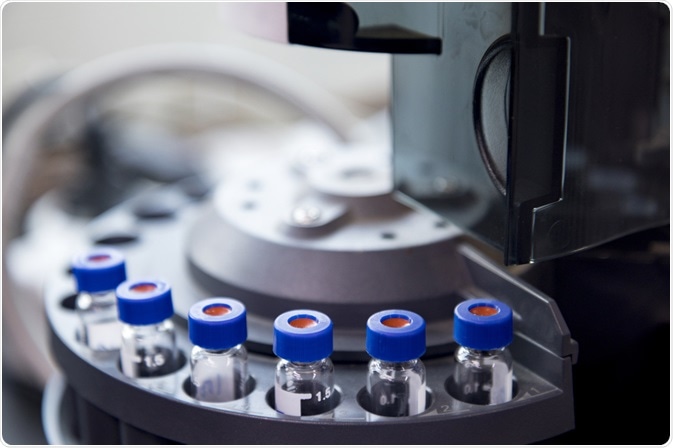As the use of cannabis becomes legal across the US, there is a growing need to establish a reliable approach to ensure the quality and the safety of the new commercial product.

Image Credit: kdsoo322/Shutterstock.com
Mass spectrometry has begun to emerge as a suitable approach for widespread adoption as an analytic technique for measuring cannabis potency and detecting the addition of harmful compounds.
The increasing need for reliable methods of cannabis analysis
As of January this year, a total of 11 states permit the recreational use of marijuana in adults 21 and over, and 33 states allow the use of the substance for medical purposes.
In addition, the public’s support for cannabis legalization has reached a peak, with a 2019 poll revealing that 67% of Americans are in favor of legalizing the substance, representing a 5% increase on the previous year.
With growing support, as well as mounting empirical evidence demonstrating its potential for therapeutic use, it is expected that many more states will follow the trend and put legislation in place to legalize cannabis.
As legalization sweeps the country, there is a growing need for the regulation of the substance, which is legal now for medicinal purposes in over half of US states, to ensure the quality and safety of the drug.
Analytical labs require more accurate and reliable techniques for the analysis of cannabis samples to determine their components. Although the cannabis industry is still young, it is predicted to be valued at $22 billion by 2022.
Because of this, there will be a rapidly growing number of growers and product producers looking to enter this lucrative market.
Given the financial incentives, it is expected that there will be a portion of the company involved in the cannabis market who will seek to capitalize on the financial gains while disregarding the need to ensure the product’s safety and integrity.
Therefore, regulations that involve standardized methods of testing are required to keep consumers safe.
Mass spectrometry presents a solution to this need. It is already emerging as an approach used routinely in the cannabis industry to ensure product safety, as it is similarly used in other industries to maintain product quality.
Below we discuss how it is used to determine several key factors that determine the product’s quality and safety.
Using mass spectrometry to analyze cannabis
Determining potency
One of the most common uses of mass spectroscopy in the cannabis industry is in the measurement of the plant’s potency. This means determining the percentage of THC and CBD in the substance, as well as measuring the levels of THCA (delta-9-tetrahydrocannabinol) acid, CBDA (cannabidiolic acid), and CBN (cannabinol).
While some of these compounds are very similar in molecular terms, they evoke different pharmacological effects.
Given the growing medical use of cannabis, it is essential to determine the levels of these substances in the plant to ensure that the dosage patients require to treat their illnesses remains constant. It is also important to consider that while THC has psychoactive effects, CBD does not.
Therefore, when considering cannabis grown for medical use, it is essential that if a product is marketed as a CBD product it should be just that, THC should not be in abundance in these products.
Detecting pesticides
Pesticides are considered a major concern for the sale of cannabis plants and products. Because cannabis is a natural product, grown similar to how our fruit and vegetables are, they are similarly at risk to pesticide contamination, which is a hazard to human health.
Cannabis plants and products should contain no or very low levels of pesticide contamination to ensure that they are safe to use. Mass spectrometry is being used to determine the levels of pesticides such as insecticides, fungicides, rodenticides, and more that are present in cannabis.
Measuring terpenes
Recently, research has begun to uncover that there are many chemicals existent in the cannabis plant that may add to its therapeutic value, not just cannabinoids that have been the focus of many studies in this field.
Terpenes have recently been identified as chemicals that exist in cannabis that produce therapeutic responses such as regulation of blood glucose and reducing inflammation.
Therefore, measurement of terpenes is vital to not only furthering our understanding of their therapeutic value but also regulating the levels of these substances in cannabis products.
Detecting heavy metals
Cannabis plants are good at removing heavy metals from the soil in which they are grown. This presents a major health concern due to the negative impact that some heavy metals have on human health.
Therefore, detecting and measuring the levels of heavy metals in cannabis via mass spectrometry has become vital in protecting cannabis consumers from the detrimental impacts of heavy metal exposure.
Detecting mycotoxins
The long-term storage of plant material can lead to the growth of mycotoxins, the secondary metabolites of mold which are toxic to humans. Mass spectrometry has been established as a reliable method of detecting these harmful mycotoxins in cannabis, preventing humans from coming into contact with them.
Overall, mass spectrometry has a wide range of uses in the analysis of cannabis. However, its overarching role is to regulate cannabis as a consumer product, ensuring consistent potency and quality while also protecting consumers from being exposed to harmful substances that may be contained in cannabis plants and products.
Further Reading